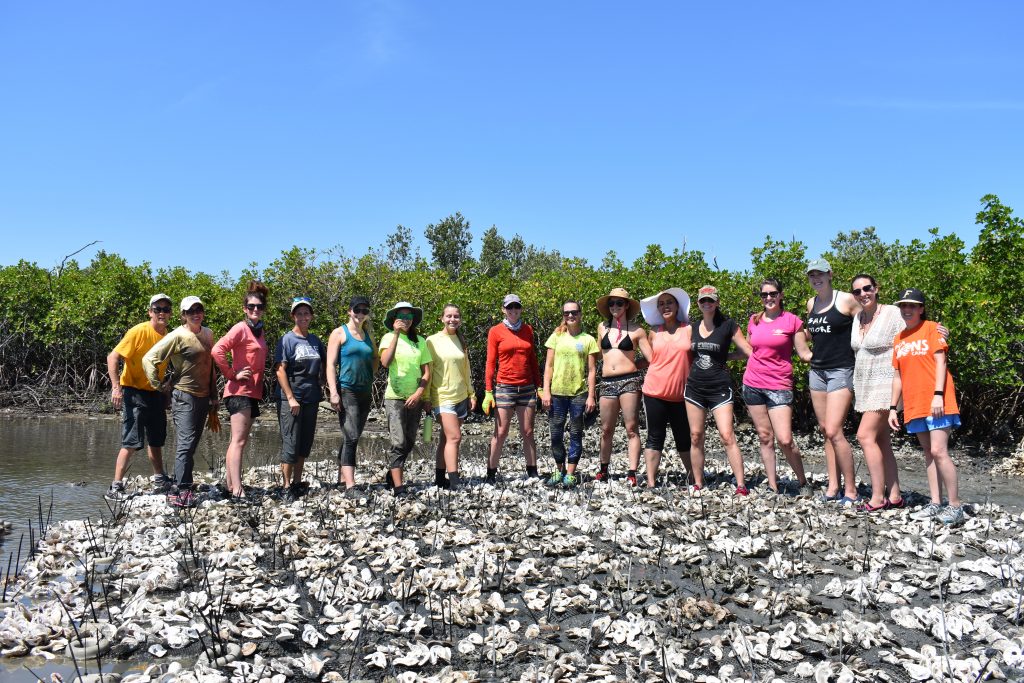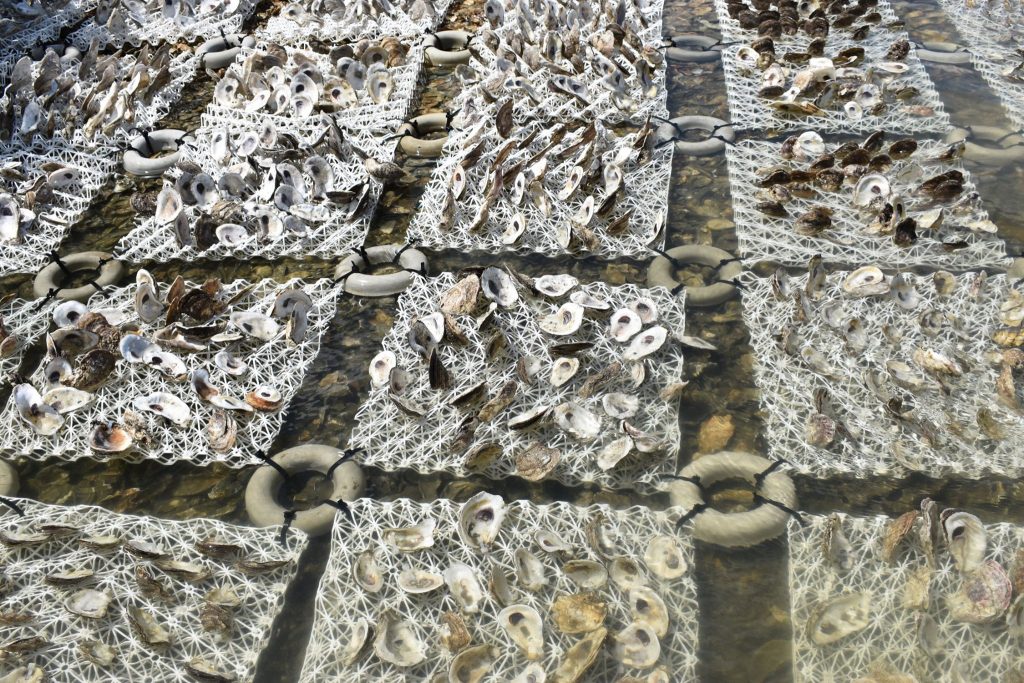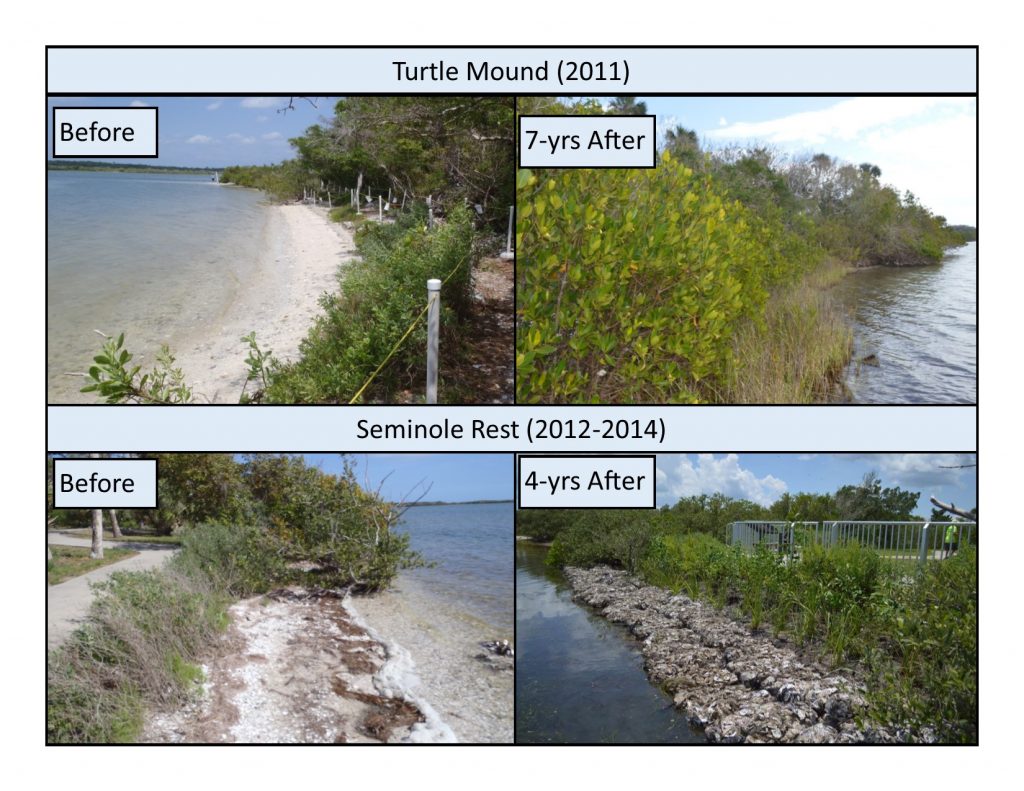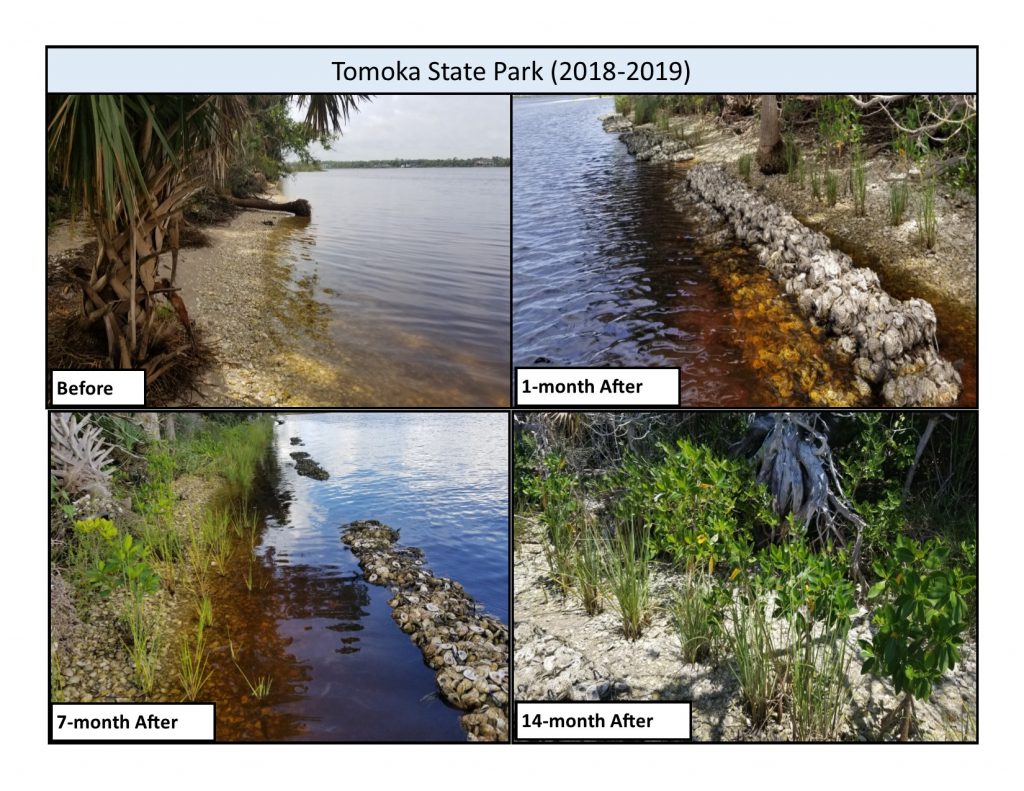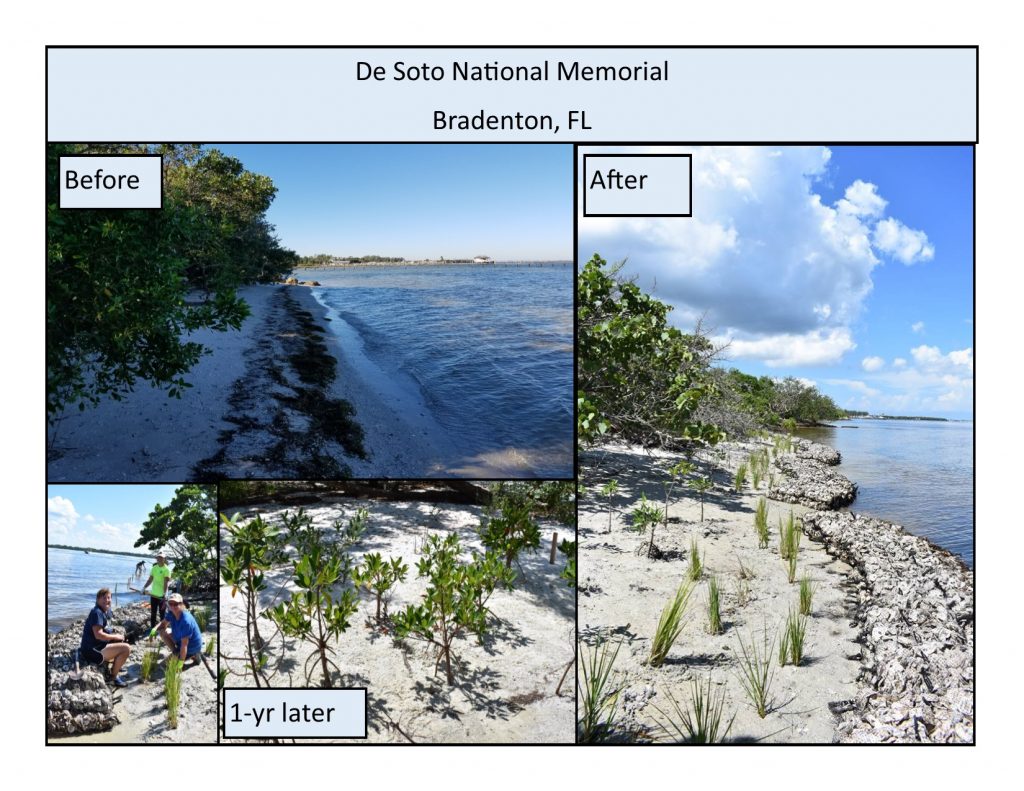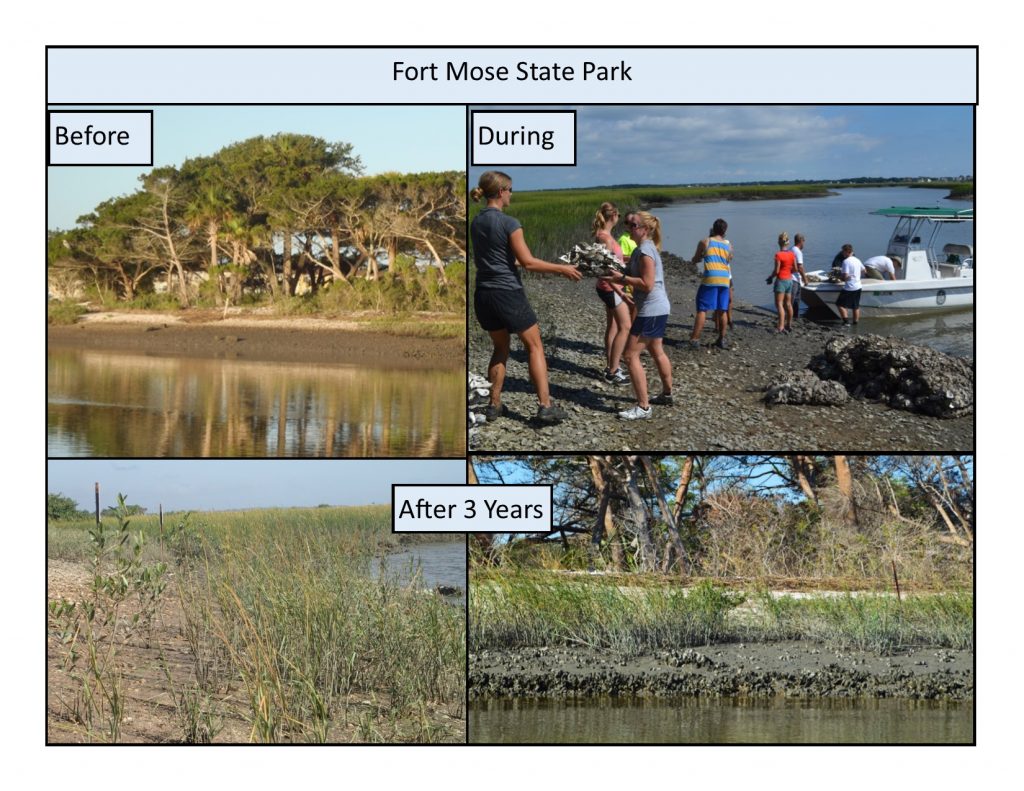2022-2023 Status Report to Indian River Lagoon National Estuary Program:
Oyster Reef Restoration
Oyster reef restoration began in 2007 in Mosquito Lagoon, Florida. Restoring reefs is needed after significant boat strike damage that dislodges/fragments mats combined with sea level rise increasing boring sponge activity causing shells to become brittle and susceptible to boat strikes. During our 2022-2023 funding period, we restored 5 reefs with IRLNEP funding, plus 7 reefs with Florida Fish and Wildlife Conservation Commission using only biodegradable materials. Our career total for intertidal oyster reef restoration is 97 reefs restored, with a restoration footprint of ~4 acres.
Recruitment and survival of oyster reefs on 2007 mats remains very high at 896.44 live oysters per square meter. We have supplied substrate to potentially restore over 14 million oysters to the waters of Mosquito Lagoon. Positive impacts have been documented in terms of oyster recruitment, habitat improvement and community engagement. The dominant seagrass species, Halodule wrightii naturally recruited adjacent to 26% of restored oyster reefs. Project lifetime volunteer numbers: 51,330.
Living Shoreline Stabilization
Living Shoreline stabilization focuses on culturally important shorelines (historic structures, shell middens). Since the initial project in 2011, a total of 7.3 km of shorelines have been stabilized at historically significant shell-midden locations using living shoreline methods. Our oldest stabilized shorelines, Turtle Mound (2011) and Eldora House (2012) are now protected by vegetated shorelines with mangroves over 4 m in height.
In 2023, 1,115 linear feet of highly eroded shorelines were stabilized at Middle Island in Canaveral National Seashore. In 2022, we expanded our successful living shoreline methods to an additional 700 ft of shoreline with non-plastic materials with 88% survival of planted mangroves and increased plant cover. All sites completed in 2020 or earlier have now reached 90-100% cover of vegetation. We have documented that living shoreline methods have been effective at increasing the extent and quality of shoreline habitats while reducing rates of erosion as vegetative cover increases over time. Project lifetime volunteer numbers: 10,684.
Combined lifetime volunteer numbers: 71,000
Restoration Habitats, Locations and New Materials
Focal restoration and stabilization habitats include:
- Oyster reefs (patch and fringing)
- Highly eroded shorelines, especially fronting valued cultural artifacts (e.g. shell middens, historic buildings)
- Mosquito impoundments/ditches
Locations in Florida where we have led restoration/stabilization are:
- Oyster reef restoration: Indian River Lagoon, especially Canaveral National Seashore
- Living Shoreline stabilization: Canaveral National Seashore, DeSoto National Memorial, Tomoka State Park, Fort Mose State Historic Park, City of Titusville, Washington Oaks State Park, Gamble Rogers State Park
We collaborate with restoration experts around the globe to improve both the science and materials used in our restoration. We are currently testing biodegradable BESE products for oyster restoration.

